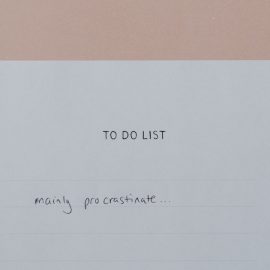

This article is an excerpt from the Shortform book guide to "The Art of Seduction" by Robert Greene. Shortform has the world's best summaries and analyses of books you should be reading.
Like this article? Sign up for a free trial here.
How do you get someone to like you? What are some manipulative tactics you can use to get someone to fall for you?
In his book The Art of Seduction, Robert Greene explains how to intentionally manipulate someone’s emotions to get them to like you. To that end, he provides several manipulative tactics to make someone totally fixated on wanting to be with you.
With this in mind, here’s how to manipulate someone into liking you, according to Robert Greene.
How to Seduce Someone Through Manipulation
In his book The Art of Seduction, Robert Greene explains how to manipulate someone into liking you using psychological tactics:
Play the hero. You need to prove your devotion to your target, so Greene suggests you find a way to “rescue” them. Be ready to spring into action to help them with anything they need, at all times. Even if it’s not something you want to do, remember that this will work to your advantage. When you do help your target, he says, be sure to play up how much it cost you—in time, effort, or money. If nothing comes up naturally, you can create a scenario where you put them in an invented danger or crisis situation that you have to help them out of.
Add an element of danger. Make your target feel like there’s something a bit dangerous about you. Break some social rules or taboos. Greene says married people are particularly susceptible to this tactic. Play up the fact that you share a “dirty secret.”
(Shortform note: You may want to proceed with some caution if introducing an element of danger into someone’s life. Research shows that while some people are drawn to an element of danger, many are averse to it. Studies show it may come down to a specific dopamine receptor that makes some people more thrill-seeking. Often what we perceive as risk-taking behavior is really a pursuit of novelty—people seek out adventures because they want new experiences they haven’t had before. So, this finding is more consistent with Greene’s advice in Phase 2 to create the element of surprise.)
Take advantage of childhood trauma. Get your target to talk about their childhood and play the role of “therapist.” Listen intently and notice where they express something missing in their life, then fill that for them. For example, if they didn’t get enough encouragement as a child, become encouraging. Or if they had uninvolved parents, become parental toward them by being loving but also sometimes “scolding” or “punishing” them. (Shortform note: While genuinely wanting to fill an emotional or psychological void for someone can be healthy, purposefully using someone’s trauma to manipulate them is a behavior often associated with psychopathy.)
Combine spirituality and physicality. To make your target feel that your bond is deep and meaningful, incorporate an element of spirituality into your seduction. If you portray yourself as being spiritual in some way, Greene says they won’t suspect your manipulation and will trust that your intentions are pure. Expose them to sublime art, poetry, music, or theater, so that they associate you with that soulful feeling. (Shortform note: Rather than putting up a spiritual facade, you might consider undertaking a genuine spiritual pursuit. Science confirms that people who have religion or spirituality in their lives tend to be happier, and less depressed and anxious, than those who don’t.)
Alternate between giving pleasure and pain. Always keep your target on an emotional roller coaster. According to Greene, people get addicted to that kind of excitement. So he says you should try to elicit feelings like jealousy, insecurity, and anger, so you can then relieve those feelings for them. Niceness is only attractive in the very beginning, but people get easily bored with it. Creating a cycle of alternating pain and pleasure causes dependency. Your target will be addicted to you.
One warning Greene offers about this tactic: be sure not to use it too early on. Wait a bit to introduce the pain. And don’t use this on people who already have too much pain and suffering in their lives—it will turn them off.
(Shortform note: In the pickup artist community, this “roller coaster” method is called the Push Pull Technique. As the name implies, the seducer does some flirtatious behavior such as giving compliments and affection, to pull the target toward them. Then, when the target shows interest, they do something to push them away, such as turning their attention to someone else, and then the cycle repeats.)

———End of Preview———
Like what you just read? Read the rest of the world's best book summary and analysis of Robert Greene's "The Art of Seduction" at Shortform.
Here's what you'll find in our full The Art of Seduction summary:
- The psychology of how to successfully entice lovers or devoted followers
- Greene's advice for choosing a seduction target based on their characteristics
- A step-by-step guide on how to seduce your chosen target






